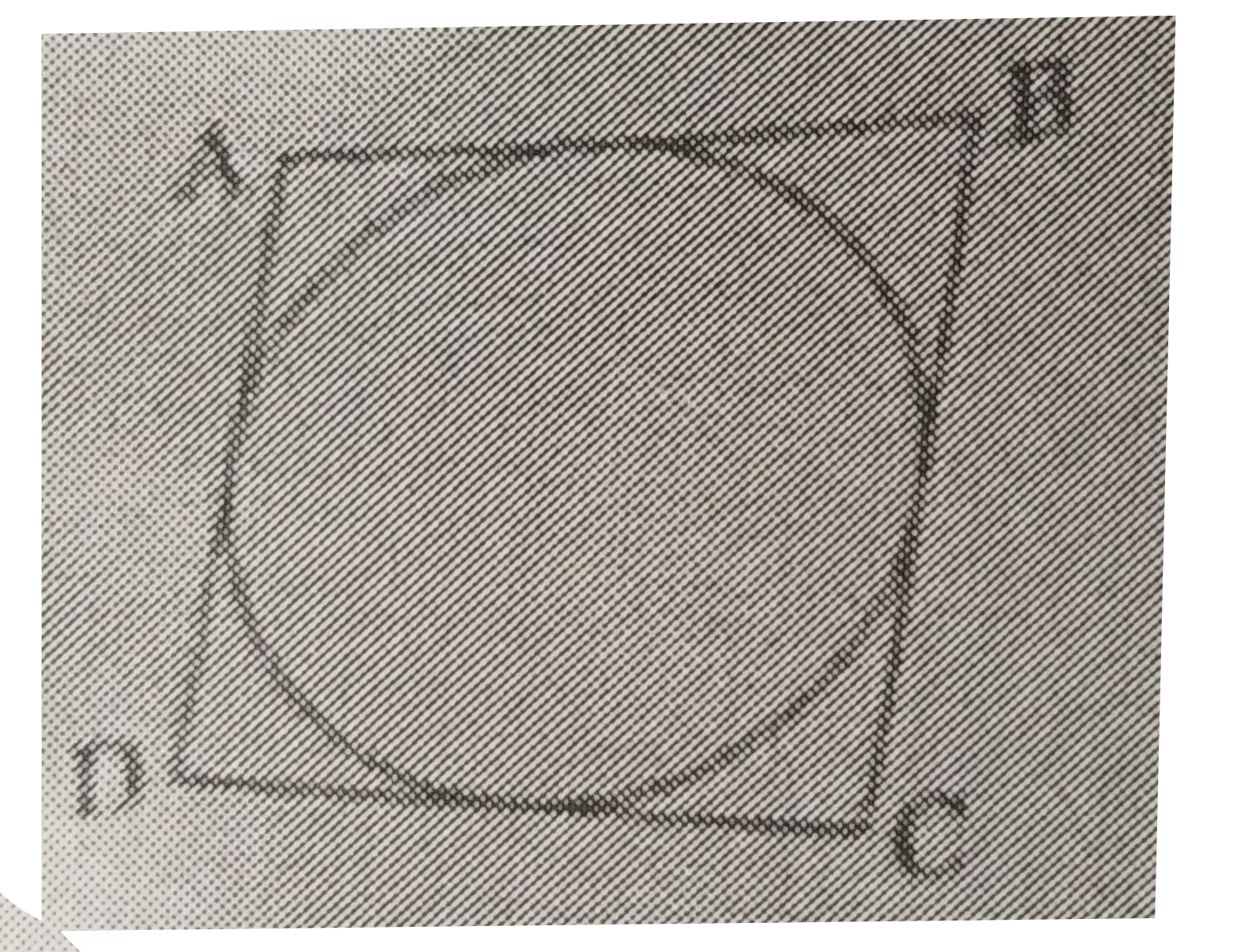A quadrilateral ABCD is inscribed in a circle . If AB is parallel to CD and AC=BD, then the quadrilateral must be a
parallelogram
rhombus
trapezium
None of the above
To solve the problem, we need to analyze the properties of the quadrilateral ABCD given the conditions that it is inscribed in a circle, AB is parallel to CD, and AC is equal to BD.
1. Understanding the Properties of the Quadrilateral:
- We know that quadrilateral ABCD is inscribed in a circle, meaning all its vertices lie on the circumference of the circle.
Hint: Remember that a cyclic quadrilateral has specific properties related to its angles and sides.
2. Identifying Given Conditions:
- The first condition states that AB is parallel to CD. This indicates that ABCD could be a trapezium or a parallelogram.
- The second condition states that AC = BD. This means that the diagonals of the quadrilateral are equal.
Hint: Think about what it means for two sides to be equal in a cyclic quadrilateral.
3. Analyzing the Implications of the Conditions:
- Since AB is parallel to CD, we can infer that the angles formed by these sides with the diagonals will be equal (alternate interior angles).
- The equality of the diagonals (AC = BD) suggests that these diagonals could be diameters of the circle.
Hint: Recall that in a circle, if two chords (or diagonals) are equal, they subtend equal angles at the circumference.
4. Determining the Nature of the Quadrilateral:
- If AC and BD are diameters of the circle, then they intersect at the center of the circle, which means they bisect each other.
- In a quadrilateral where one pair of opposite sides is parallel and the diagonals bisect each other, the quadrilateral is classified as a trapezium.
Hint: Consider the definitions of different types of quadrilaterals and their properties.
5. Conclusion:
- Based on the analysis, since we have established that ABCD has one pair of parallel sides (AB || CD) and the diagonals are equal (AC = BD), we conclude that quadrilateral ABCD must be a trapezium.
Final Answer: The quadrilateral ABCD must be a trapezium.
- We know that quadrilateral ABCD is inscribed in a circle, meaning all its vertices lie on the circumference of the circle.
- The first condition states that AB is parallel to CD. This indicates that ABCD could be a trapezium or a parallelogram.
- The second condition states that AC = BD. This means that the diagonals of the quadrilateral are equal.
- Since AB is parallel to CD, we can infer that the angles formed by these sides with the diagonals will be equal (alternate interior angles).
- The equality of the diagonals (AC = BD) suggests that these diagonals could be diameters of the circle.
- If AC and BD are diameters of the circle, then they intersect at the center of the circle, which means they bisect each other.
- In a quadrilateral where one pair of opposite sides is parallel and the diagonals bisect each other, the quadrilateral is classified as a trapezium.
- Based on the analysis, since we have established that ABCD has one pair of parallel sides (AB || CD) and the diagonals are equal (AC = BD), we conclude that quadrilateral ABCD must be a trapezium.
Similar Questions
Knowledge Check
A quadrilateral ABCD is inscribed in a circle. If AB is parallel to CD and AC = BC, then the quadrilateral must be a
Aa. parallelogramBb. rhombusCc. trapeziumDd. None of theseQuadrilateral ABCD is circumscribed to a circle. If AB=6cm, BC=7cm and CD=4cm then the length of AD is
A3cmB4cmC6cmD7cmQuadrilateral ABCD circumscribes a circle. If AB = 8 cm, BC = 7 cm and CD = 6 cm, then the length of AD is:
A7 cmB6.8 cmC7.5 cmD6 cm
Let ABCD be a quadrilateral in which AB is parallel to CD and perpendicular to AD, AB = 3CDand the area of the quadrilateral is 4 square units. If a circle can be drawn touching all the sides of the quadrilateral, then its radius is:
View SolutionThe midpoints of the sides AB,BC,CDandDA of a quadrilateral ABCD are joined to form a quadrilateral. If AC=BDandAC⊥BD then prove that the quadrilateral formed is a square.
View SolutionIn Figure, a quadrilateral ABCD is drawn to circumscribe a circle .
Prove that
AB+CD=BC+AD

View SolutionA quadrilateral ABCD is drawn to circumscribe a circle. Prove that AB+CD=AD+BC.
or
A circle touches all the four sides of a quadrilateral ABCD. Prove that AB+CD=BC+DA.
View SolutionIf the sides of a quadrilateral ABCD touch a circle and AB = 6 cm, CD = 5 cm, BC = 7 cm, then the length of AD in cm is :
View Solution
